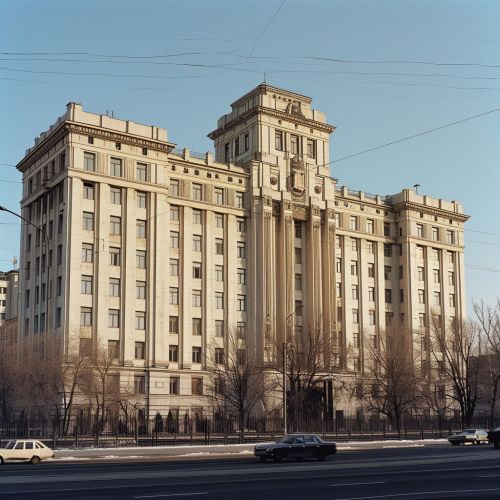Supreme Court of the Soviet Union
History
The Supreme Court of the Soviet Union was established in 1923, following the dissolution of the Russian Soviet Federative Socialist Republic's Supreme Court. The court served as the highest judicial authority in the Soviet Union, overseeing the interpretation and application of laws and decrees. It was the final court of appeal and had the power to review the decisions of lower courts.


Structure
The Supreme Court consisted of two main divisions: the Judicial Collegium for Civil Cases and the Judicial Collegium for Criminal Cases. Each Collegium was composed of a chairman, a vice-chairman, and thirteen members. The members of the court were elected for a term of five years by the Supreme Soviet of the Soviet Union, the highest legislative body in the USSR.
Jurisdiction
The Supreme Court had jurisdiction over all criminal and civil cases in the Soviet Union that were brought to it on appeal. It also had the power to supervise the work of local and republic-level courts. The court could review and annul the decisions of lower courts if it found them to be in violation of Soviet law.
Role in the Soviet Legal System
The Supreme Court played a crucial role in the Soviet legal system. It was responsible for ensuring the uniform application of laws throughout the Soviet Union. The court's decisions were binding on all lower courts and had significant influence on the development of Soviet law.
Notable Cases
The Supreme Court presided over several notable cases during its existence. These include the trial of the Anti-Soviet Trotskyist Center in 1937 and the Doctors' Plot case in 1953. In these politically charged trials, the court was often accused of being a tool of the Soviet government, used to suppress dissent and eliminate political opponents.
Dissolution
With the dissolution of the Soviet Union in 1991, the Supreme Court of the Soviet Union was disbanded. Its functions were taken over by the newly established Supreme Court of the Russian Federation.
